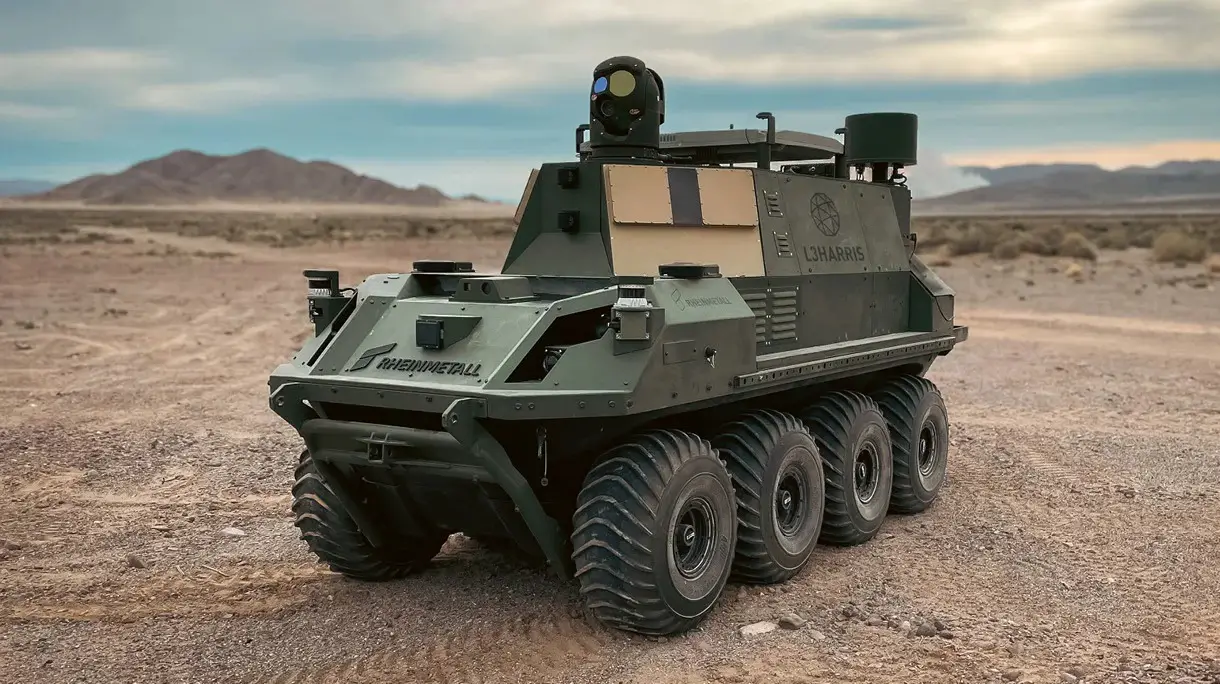L3Harris’ Agile Development Group has been iteratively developing a robotic based, highly mobile, short range air defense capability that meets today’s mission needs and is inherently designed to adapt to tomorrow’s threats quickly and economically. The prototype system participated in this year’s Project Convergence Capstone 4 (PC-C4) field experiment and seamlessly integrated advanced long-range surveillance and electronic attack (EA) capabilities onto a fully autonomous combat vehicle, enhancing ground-based air defense with beyond-line-of-sight (BLOS) operations. The team adapted BLOS technology to an additional platform while at the event, demonstrating their ability to respond to emerging robotic system demands. PC-C4 is a series of exercises, experiments, and events to identify and refine strategies essential for transforming the U.S. Army and securing their war-winning readiness. L3Harris is committed to delivering cutting-edge solutions to the battlefield, effectively balancing the enhancement of capabilities with the minimization of risks to our warfighters.
“Our team’s relentless drive to adapt and innovate is what ultimately drove our success with these prototypes,” said Jennifer Lewis, President, Airborne Combat Systems, L3Harris. “Thanks to their tireless efforts, we’re coming away with valuable insights that will drive further improvements, strategic decisions, and ultimately, powerful new capabilities to the warfighter.”
The prototype excelled in rigorous field tests, navigating approximately 175 kilometers of challenging terrain over six days. It demonstrated robust capability across various mission scenarios, including:
- Counter-Unmanned Aircraft System surveillance and electronic warfare, with an autonomous multi-sensor cross-cueing payload able to provide early warning of air threats, operated from over 26 kilometers away.
- Dynamic reconnaissance en route to surveillance positions, capturing optical data on-the-move at beyond-line-of-sight ranges.
This testing demonstrated the precision accuracy of the WESCAM MX™-10D reconnaissance, surveillance and target acquisition multi-sensor imaging and designator system. It also included several communications tests, providing insights related to integration, performance and applicability of modular and open communication systems, and true resiliency for mission-relevant data links. The communications capabilities tested included the RASOR modular communications chassis, Mobile Ad Hoc Network WRAITH, a SATCOM On-the-Move antenna, the AN/PRC-158 Next Gen radio, a RF-7850W high-capacity line of sight radio and a hardened third-party commercial space internet satellite. These field tests show the potential for air defense systems to evolve into nimble, tactical assets that enable protection to ground units at low levels. The prototype development and testing has revealed that the operational range of autonomous ground platforms performing missions can be expanded by several orders of magnitude, liberating them from the constraints of traditional data link ranges. The system also highlighted the potential for increased payload automation to ensure mission integrity in the face of link degradation or attack.












